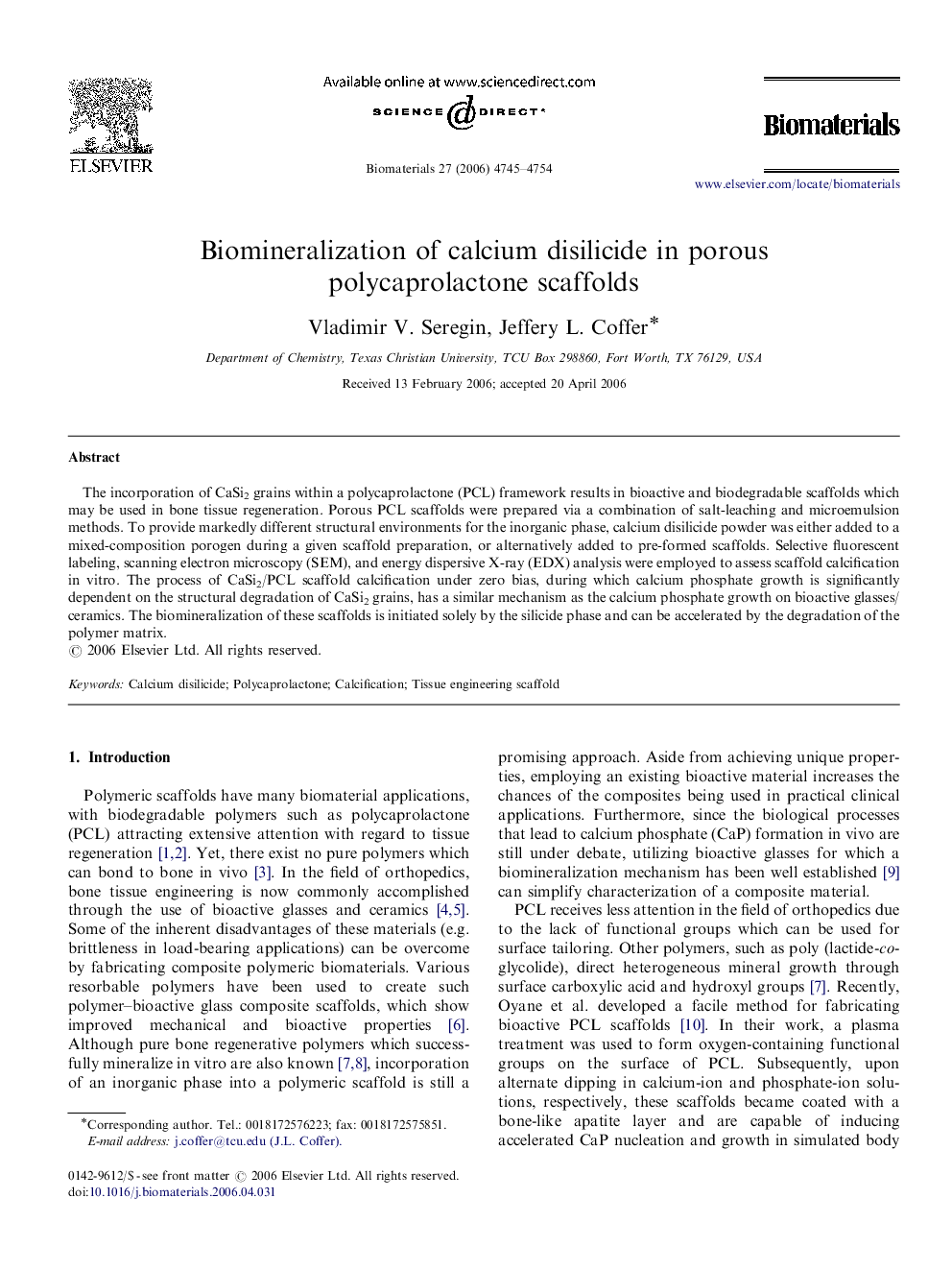| Article ID | Journal | Published Year | Pages | File Type |
|---|---|---|---|---|
| 11316 | Biomaterials | 2006 | 10 Pages |
The incorporation of CaSi2 grains within a polycaprolactone (PCL) framework results in bioactive and biodegradable scaffolds which may be used in bone tissue regeneration. Porous PCL scaffolds were prepared via a combination of salt-leaching and microemulsion methods. To provide markedly different structural environments for the inorganic phase, calcium disilicide powder was either added to a mixed-composition porogen during a given scaffold preparation, or alternatively added to pre-formed scaffolds. Selective fluorescent labeling, scanning electron microscopy (SEM), and energy dispersive X-ray (EDX) analysis were employed to assess scaffold calcification in vitro. The process of CaSi2/PCL scaffold calcification under zero bias, during which calcium phosphate growth is significantly dependent on the structural degradation of CaSi2 grains, has a similar mechanism as the calcium phosphate growth on bioactive glasses/ceramics. The biomineralization of these scaffolds is initiated solely by the silicide phase and can be accelerated by the degradation of the polymer matrix.
